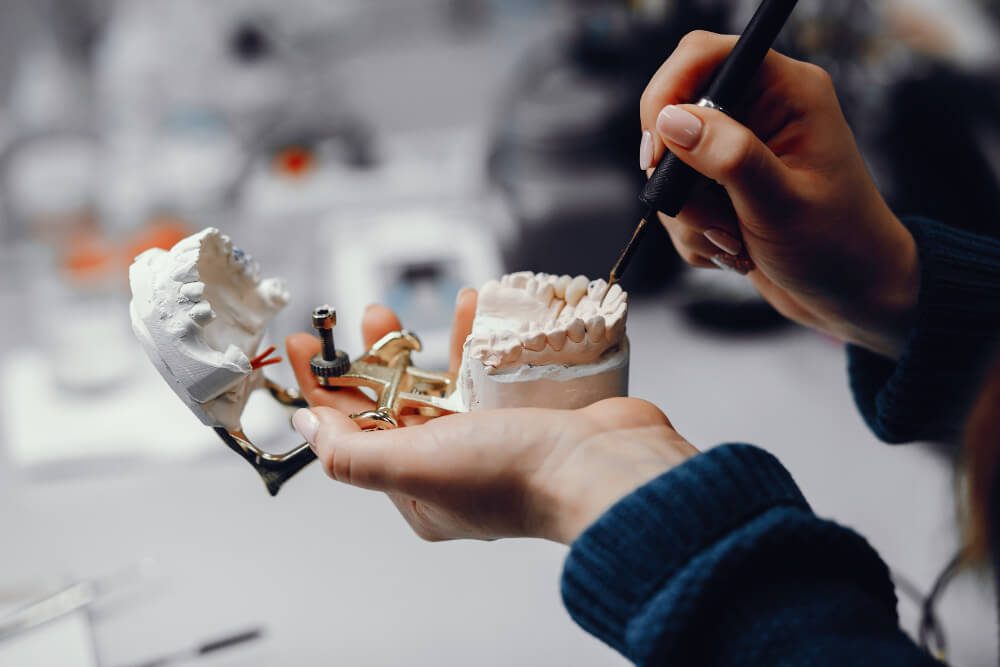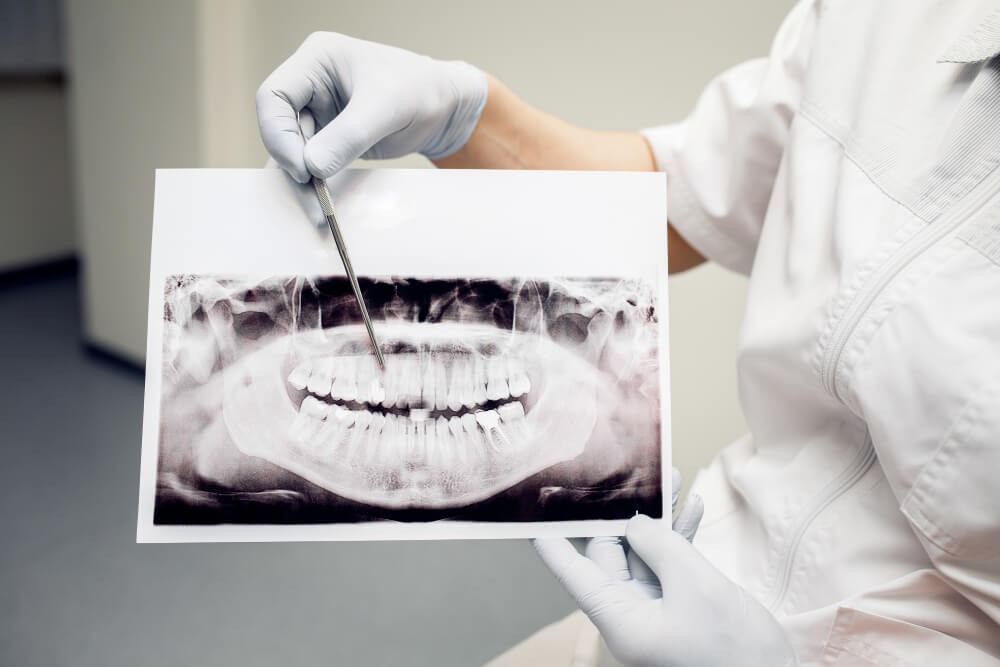Bone Grafting for Dental Implants — When Is It Required?

Bone grafting for dental implants is an effective treatment for weak jawbones that require mass and height to support an implant.
If you’re missing a tooth due to an accident, trauma or disease and don’t have enough healthy bone to support a dental implant, a bone graft can help you achieve the desired outcome. Bone grafting involves taking bone from another part of your body or a donor and surgically placing it in the area that needs additional support for the implant.
Before proceeding, it’s essential to understand the risks, benefits, and recovery time associated with this procedure. Furthermore, understanding what material is used during the process is crucial in making an informed decision.
By opting for a bone grafting procedure before getting dental implants, you can ensure that you’ll achieve long-lasting results with minimal risks of complications down the line.
Why is bone graft a common pre-treatment for dental implants?
Bone grafts are often necessary for dental implant patients, as the jawbone needs to be strong and dense enough for the implant to take hold.
If you experienced bone loss due to gum disease, trauma, or age-related degradation, then it may not be possible for your dental implant to integrate successfully.
To ensure sufficient healthy bone in the area of the jaw where the implant will be placed, a bone graft procedure is usually needed to fill any missing or weakened areas of bone. This can help create a stronger foundation so that the implant will remain in place without fail.
Successful bone grafting ensures enough solid structure for the implant to attach securely so it won’t cause discomfort or instability due to a lack of support.
Furthermore, advanced techniques, such as guided tissue regeneration, can help stimulate further new bone growth, achieving long-term stability for optimal success with dental implants.
It’s important to note that each person’s needs will vary based on their unique situation and bone structure, so consulting with one of our experienced Northbridge dentists is key when considering this type of surgery.
What is the first step in a bone graft procedure?
Once it has been determined that dental implants are the best restorative treatment for your missing teeth, the team of highly skilled, caring dentists will have a consultation with you to discuss the treatment and explain the need for a jawbone graft if you require it.
They will then use their experience to create a customised plan for your dental implant treatment, including a bone graft procedure.
You may need a CT scan or 3D imaging to determine if you are a suitable candidate for jaw bone grafting. If so, then X-rays or other imaging tests can be done to provide detailed information about the hardness, width, length, and shape of the jawbone where the new implant will be placed.
The dentist will also advise on lifestyle changes that can be implemented before and during treatment to maximise the outcome and minimise any potential risks associated with the surgery.
What is the next step in getting a jaw bone graft?
After completing all necessary pre-procedure tests, a custom-made titanium implant is usually placed into the jawbone. This is done with care so surrounding tissue and nerves are not damaged.
A prepared mixture of bone graft material—harvested from another part of your body or donor material—is placed along the titanium implant to support it and help it heal properly into your existing jawbone tissue.
Occasionally, artificial material such as calcium phosphate may be used instead of bone material. Once this has been done, it takes several months for healing and osseointegration (fusion) to occur before the dental implant placement can begin.
Which materials are used in a bone graft?
Several different materials can be used in jawbone grafts.
Autogenous bone is the most desirable choice, as it is harvested from the patient’s body and carries minimal risk of rejection.
Xenogenic bone graft material derived from bovine tissue adds strength and suppleness to the procedure while also providing longevity.
Allografts are sourced from human donors and have undergone laboratory processing to prevent disease transmission.
Alloplast is the only synthetic option available. It typically consists of minerals found in natural bone, such as calcium phosphates, which integrate during bone growth.
When selecting a jawbone graft option, the characteristics of each material must be considered. For example, autogenous bone allows maximum integration due to its natural makeup but requires additional surgery for harvesting. In contrast, alloplastic provides an effective solution without additional recovery time from donor harvesting.
Ultimately, the most suitable material will depend on your body, individual requirements, and the customised treatment plan decided by our competent doctors.

How successful are bone grafting procedures?
The success rate of a bone graft before a dental implant treatment is very high, with studies indicating that it can reach up to 98.5%.
This is due to modern treatments, which allow for an approach that allows for the complete integration of new materials with the remaining bone matter and better healing of the gum tissue after the surgery.
The quality and quantity of healthy bone tissue will be evaluated sometime after the surgery to measure the procedure’s success.
Furthermore, advanced technology in dental implants now enables them to be tailored to your specific needs and consider what your body will best accept, thereby increasing the chances of a successful outcome.
Modern dentistry also allows for faster healing times and less discomfort during and after the operation.
Unlock a new smile with an innovative treatment with high success rates.
Bone grafting for dental implants is a successful procedure with high success rates.
Using an appropriate bone grafting material and innovative treatments has enabled bone grafts to be tailored to individual needs, resulting in a greater chance of success and higher quality of bone tissue after the surgery.
While some risks or complications may still be associated with the procedure, such as infection or failure, these are generally rare occurrences when performed by our experienced professionals.
Overall, bone grafting for dental implants can be the best option for strong, secure dental implants. By providing you with a stronger and more resilient graft that better integrates with your surrounding bone tissue, the outcomes of a pre-dental implant bone graft can often be life-changing and highly beneficial for you.
Bone Grafting in Northbridge
If you’re looking for the best bone graft treatments, look no further than My Local Dentists.
Our highly qualified dentists are dedicated and have vast experience in this treatment. We use only the most suitable materials, advanced techniques, and technologies to minimise discomfort and achieve success.
We are committed to providing the best-in-class dental services to make your dream smile achievable. We accept most leading dental insurance and health funds to facilitate that.
If you are looking for top-quality dental care, book your appointment today!
Call your Northbridge dentist today at (02) 8318 5966 or visit us at Shop 20A Northbridge Plaza, 79-113 Sailors Bay Road in Northbridge.
